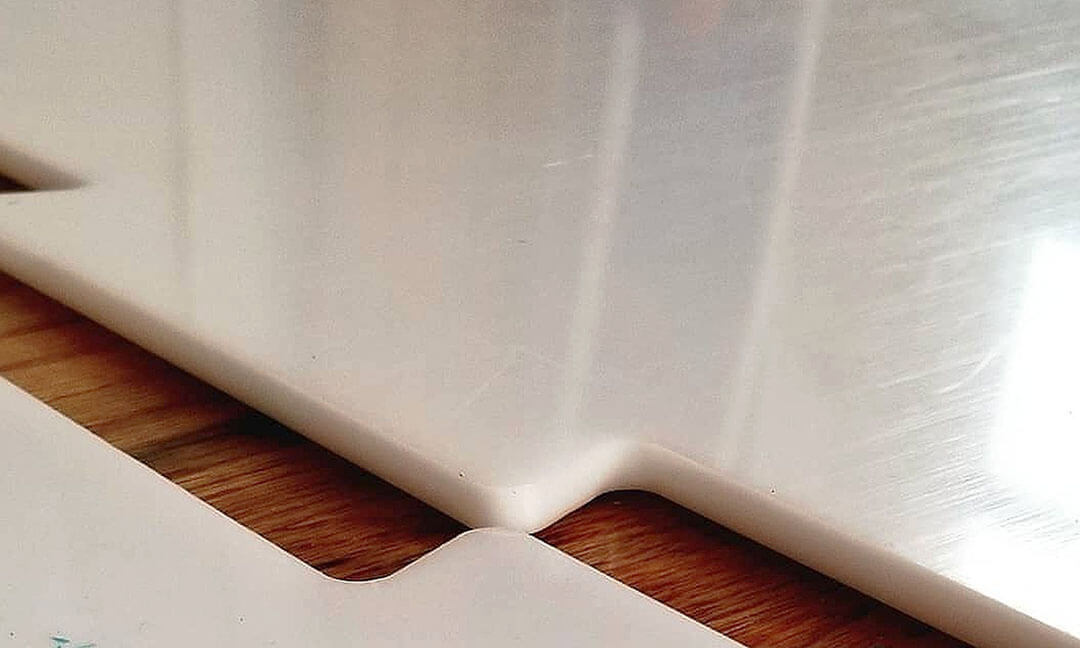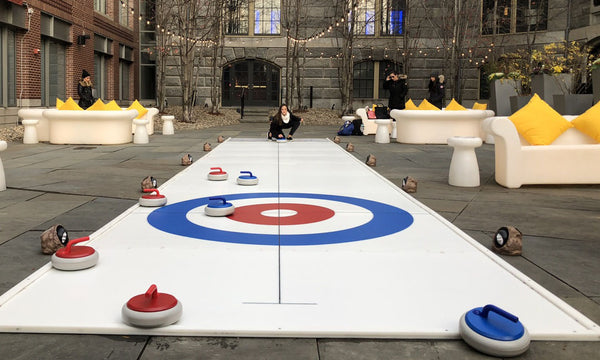12 Outdoor Ice Rink Ideas For Maximum Fun
The first outdoor ice rink dates all the way back to the 1800s.
The goal was to have a dedicated space for ice skating instead of waiting for a lake or other body of water to freeze.
An outdoor ice rink is much more fun (not to mention safer) and has opened the door for ice skating sports and activities.
Today, setting up an outdoor ice rink is much easier.
There are hundreds of community and private rinks in North America.
Businesses can install large commercial skating parks during the holidays.
And if you have a big enough backyard, you can have your own ice rink too.
When we think about ice rinks, figure skating and ice hockey come to mind.
For most people with rinks, these are great activities to keep fit and have fun.
For others, skating on rinks improve techniques and helps with practice if you (or a family member) are on a professional track.
After a while, you might want to mix things up a bit.
Taking Things Beyond Skating
An ice rink outdoor or indoor is a smooth, flat surface to skate with your ice skates.
However, that does not mean it needs to end there.
Rinks can be great places to build communities, host events, and work on your passions.
In some cases, businesses - and individual rink owners - can grow their income.
A rink of any form is an investment.
Owners need equipment and manpower to build and maintain them.
So it’s best to find ways to maximize the fun, usefulness, and, of course, the investment you’ve made.
We’ve sold, built, and owned rinks over the years.
We’ve seen some cool ways people have maximized the use of their rinks.
If you have a rink of your own, try one of these fun ways to use your rink.
1. Hold A Play On Ice
Disney on ice has been around for 40 years, showcasing their popular stories through ice skating and figure skating techniques.
The popularity of shows like The Little Mermaid and Aladdin shows no signs of slowing down.
So why not make your own ice show?
The family can come together to perform a favorite play.
Record it to share with your friends and family or invite the community.
It’s a fun way to work on your skating and acting chops.

2. Create an Airbnb Experience
The ongoing pandemic has shaped the way people go out and enjoy experiences.
As a result, many aim for smaller, more intimate (and potentially safer) events and experiences.
This need has increased the popularity of Airbnb Experiences, which was around before the start of the pandemic.
Airbnb experiences are micro-events held by special hosts that you can do in the town you’re staying.
Some experiences come with the AirBnB room or apartment.
Others are stand-alone events created by enthusiastic hosts.
If you own a backyard rink or commercial rink, why not create an experience on the ice?
It could be a skating lesson, access to the rink, or lunch on the ice.
You can control the availability and access of the rink.
Creating an experience is a great way to expose others to skating and make an additional income.

3. A Skating Birthday Party
Airbnb is aimed at external persons visiting your rink, but you can do something for your friends and family too.
We’ve seen ice skating, figure skating, and hockey-themed birthday parties.
You can throw a party for an upcoming birthday right on the ice!
Decorate your rink walls, set up skating games, and keep lots of hot cocoa on hand.
Commercial rink owners can also set up ice skating birthday parties.
Provide drinks, eats, and a specific time on the ice as part of your package.
4. Feel The Love On Ice
Do you have a loved one who’s obsessed with the ice?
Then it’s a great place to have an intimate moment.
Set up a lunch or dinner just for two on the ice.
You can even take things further and set up a wedding proposal!
If you have a synthetic ice rink - or have access to one - it will be easier to prepare a delightful proposal.
You can even go a step further like Mike and Melissa and have your wedding right at the rink!

5. Hold Ice Skating 101 Classes
If you have a large backyard ice rink, it’s a great time to share the joy you get from skating.
Today, people are looking for new, unique experiences, so teach them how to skate!
Invite a few persons from the community to the rink to learn the fundamentals of moving on the ice, or you can create a social media channel that teaches and targets your skating skills.
Why not share what you know?
6. A Neighborhood Hockey Tournament
Now it’s time to ramp things up.
People are still looking for safe spaces to resume their skating training, practice, and even play 3-on-3 games.
If your kids have been training but aching to compete, set up a friendly tournament on home turf.
Invite neighborhood kids or a team from the next town to have some fun on the ice.

7. Ice Skating Photoshoots
People love the Rink at Rockefeller not only for the fantastic tree and ambiance but for the memories they form going there again and again.
They usually capture to moment with their camera phones or photographers located at the rink. That got us thinking.
Rinks are some great backdrops for some photos!
A couples photoshoot or a family portrait of a hockey-crazed family will be an excellent gift for the holidays.
Ice rink owners can get the decorations, backdrops, and camera and start posting online about photoshoots. Take some sample photos and share them online.
It’s a great way to add some extra income from your rink.
8. A Mixer On Ice
A mixer on ice is not a cocktail, but there are cocktails involved!
Mixers are great ways for specific groups or communities to interact and build friendships.
A backyard rink is a great place to have a Friday evening mixer.
If you’re running a commercial rink, you can arrange mixers with local groups, businesses or host mixer events on ice for charity.

9. Ice Rink Exercise
Ice skating has a wonderful side effect. It keeps you in shape.
Not only can you build your cardio, but you can also strengthen your core, hamstrings, glutes, and calves. Consistent practice even builds your endurance.
An outdoor ice rink doubles as a great space to improve your overall health.
Instead of heading to the gym, strap on some skates and spend 30 minutes with some high-intensity skating.
Commercial rinks can also encourage small groups to exercise on certain days of the week.
Exercise can get boring, and ice skating is a great way to mix things up.
10. A Movie Night On Ice
Get the projector screen ready because it’s time for a movie night!
Warm-up under some blankets and popcorn while you project a classic Christmas or ice movie (Mighty Ducks, anyone?).
Invite family, friends, or neighbors over and have fun on your backyard rink.
If you have a commercial space, you can combine skating with a movie of choice. Combine different offers for different group sizes or make it an Airbnb Experience (as mentioned in number three).
11. Try Another Ice Sport
Do you know there are other sports you can play on your ice rink?
Some of these games have been around for decades, and most people are unaware they exist.
Here are some fun ones:
- Broomball: As the name implies, broomball game is played with a stick that looks like a broom and a ball. This game goes not need skates but tennis shoes. The goal is to use your broom to get the ball into the goal. Think of hockey but without the puck and skates.
- Ringette: Another hockey-like game, ringette uses a straight stick and a rubber, ring-like object. You’ll have some fun playing the game since there is no body-checking (although that does make hockey kinda fun!).
- Curling: Curling is a popular ice sport, especially around the Winter Olympics. The sport involves sliding large stones to a target along the ice. Two teams compete in sliding large stones to a target. You can find curling kits online to go with your outdoor ice rink.
Picking up another sport changes things up, and you may even find a new passion!
Conclusion
Now, with the proper budget and the suitable space, it’s easier than ever to set up an outdoor ice rink for business or personal use.
Rinks set up at home are often artificial, combining wood, liner, and lots of water.
Refrigerated rinks are more expensive and popular in commercial spaces.
They use a system similar to your home refrigerator to keep a consistent temperature but require constant maintenance.
Synthetic ice tiles and panels use a unique polyethylene material to emulate the look and feel of ice.
These panels can be customized and connected like puzzle pieces to fit almost any space.
You can use your metal skates on synthetic ice with minimal friction.
What makes synthetic ice great is its durability and the ability, cost-effectiveness, and ability to use it year-round.
It’s also a great option to quickly host some of these fantastic outdoor ideas!
If you love ice skating and you’re ready to set up a rink for personal or business use, look at your space, figure out the pros and cons, then choose the best type of rink for you.
























